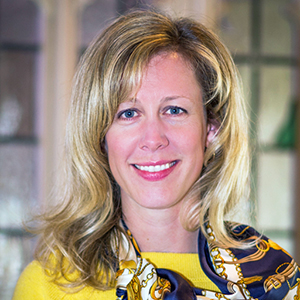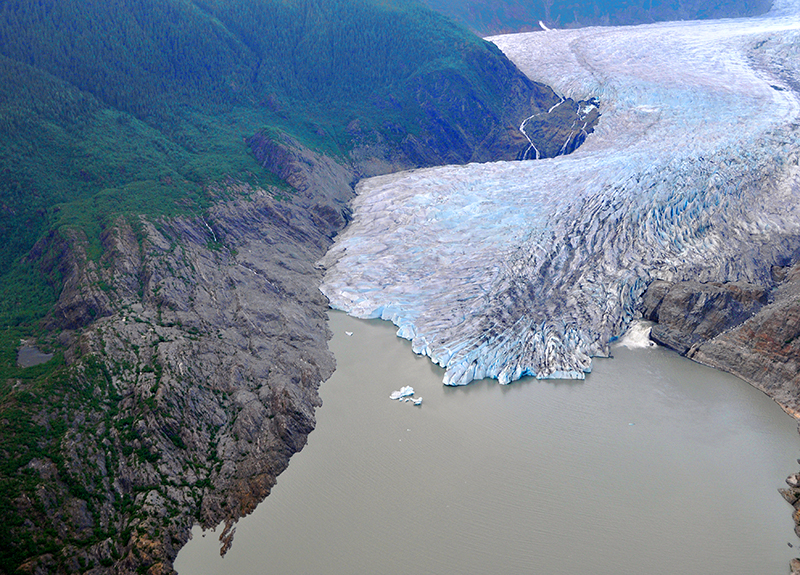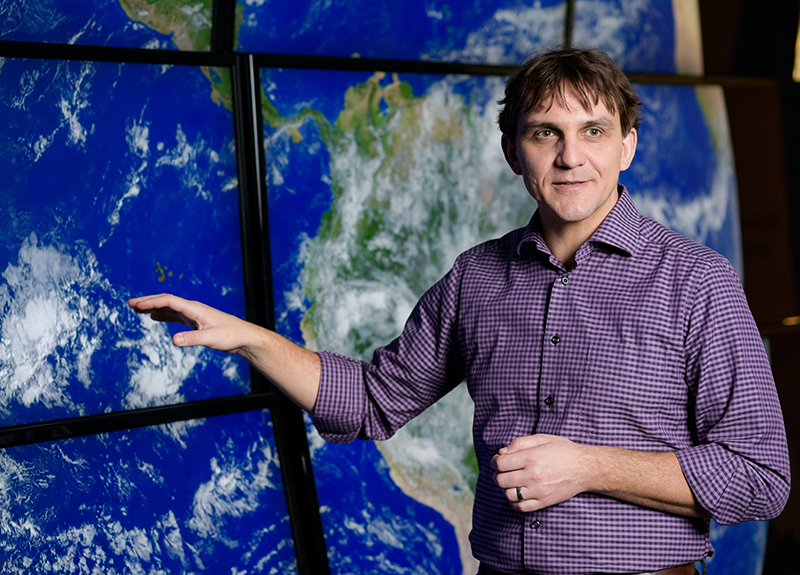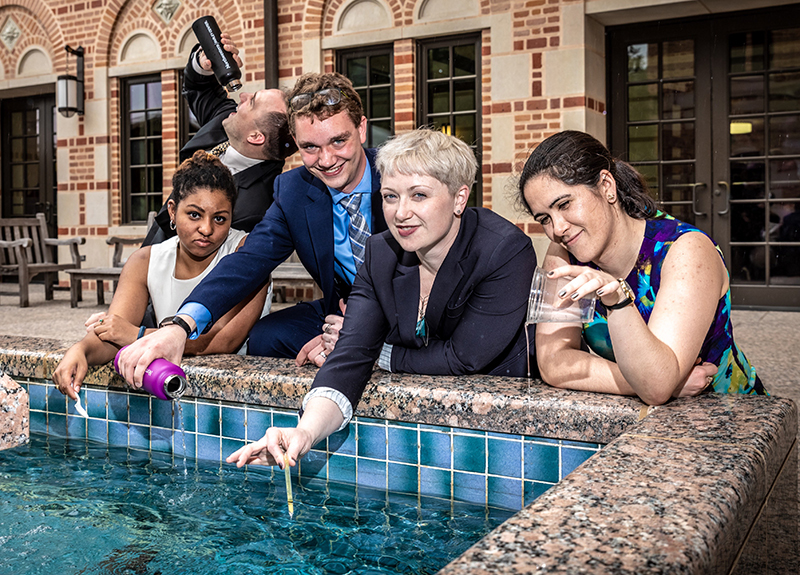Summer Arctic Expedition Offers Priceless Experience and Discovery
Peter Puleo, a rising senior in the Department of Earth and Planetary Sciences, spent his summer on top of the world—camping on rocky ground, navigating glacial lakes, and contending with the cool, misty weather brought on by low-laying clouds. He couldn’t have been happier.
Puleo travelled to South Greenland in July to collect lake sediment cores with additional members of Associate Professor Yarrow Axford’s research group. With on-the-ground direction from an expert mountaineer and guide, they spent about one week exploring each of three research sites.
“The terrain was gorgeous. It was the most beautiful place I’ve ever been,” said Puleo, who especially enjoyed the vantage point from the helicopters that moved the team from site to site over snow-capped mountains and expansive glaciers. “It was really incredible. We [the research team] spent a lot of time together, and a lot of time talking about science,” he added. Puleo’s participation was funded through a research grant facilitated by the Institute for Sustainability and Energy at Northwestern (ISEN).
“The Arctic is a sort of ‘canary in the coal mine’ for climate change, because this part of the world is warming so quickly,” explained Axford. “Climate change on Greenland matters a great deal to the rest of the world, because the Greenland Ice Sheet holds the equivalent of more than 20 feet of global sea level. By examining how past climate changes unfolded in this sensitive part of the world, we can get a better idea of what might be in store for the future.”
"By examining how past climate changes unfolded in this sensitive part of the world, we can get a better idea of what might be in store for the future.” — Yarrow Axford, Associate Professor, Department of Earth and Planetary Sciences
Laura Larocca, a doctoral student in Axford’s research group, led the summer field work that aimed to reconstruct the climate of the region over the Holocene—a timeframe extending from about 12,000 years ago through today. Their goal this summer, as part of a project funded by the National Science Foundation’s Office of Polar Programs, was to learn if and when local mountain glaciers had been smaller or disappeared in the past. “Given the projected warming over the next century, an understanding of how these glaciers responded to past climate changes (especially past warm periods) is important in establishing robust future projections,” said Larocca. Additional team members included Melissa Chipman, a postdoctoral researcher, and Everett Lasher, a doctoral student.
Each morning, the group awoke early and gathered over morning coffee to plan their day. After a check in call by satellite phone to acquire any weather updates, they walked about 50 meters down to the lake and boarded their self-made research vessel—two pontoons attached with metal and wood platforms. Once they reached a carefully selected site in the lake, they lowered their coring equipment through a hole in the center of the boat into the water, and then hammered it down using a heavy brass weight to bore through the mud beneath for a distance of up to 4.5 meters. On a rough day, they may have been blocked by a mass of rock or boulder beneath the surface. On a good day, they extracted a tube filled with several meters of sediment (containing rare records of Holocene mountain glacier fluctuations and environmental change). Using rope, they then lifted the core onto the boat for transport back to the campsite. It was a process that required extensive teamwork, according to Puleo, who estimated a core could weigh 200 to 300 pounds. In the end, they secured about four cores per site.
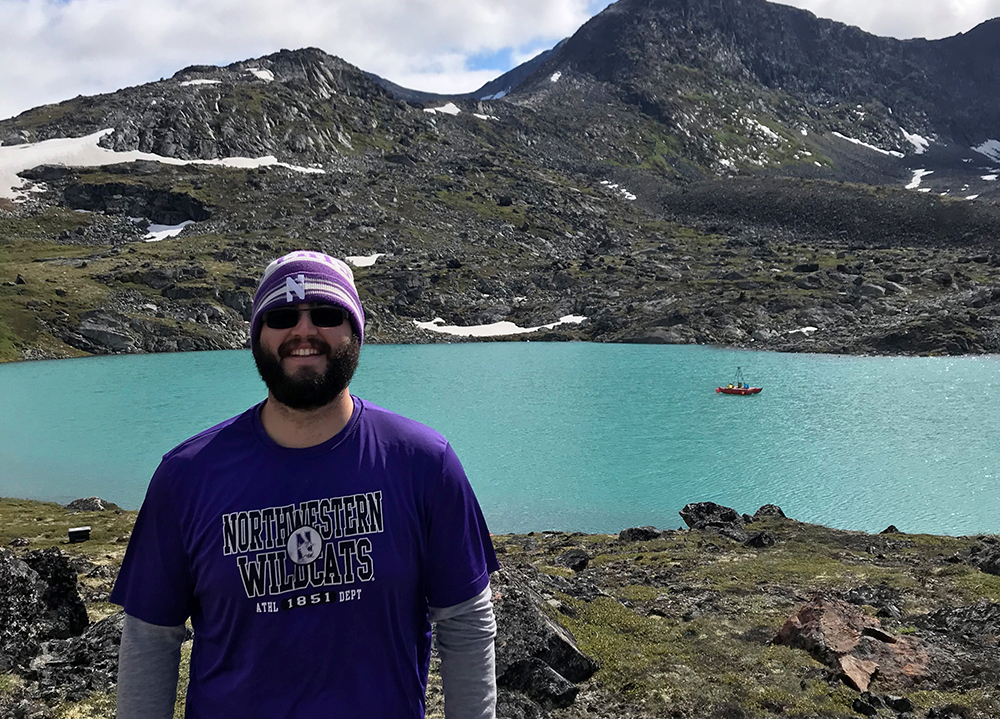
In addition to the priceless field work experience, Puleo learned a lot about the importance of communication during his summer research experience. “It was great to be working in a team that cared so much about climate and geology . . . and it was great to be the least experienced person there, and to be able to learn so much from the more seasoned people,” he said.
“Pete was an invaluable member of our field team bringing a wide range of geologic knowledge, strong communication skills, and innovative improvements to our sampling methods, one of which we nicknamed the Puleo Protocol,” said Larocca.
Puleo returned to Axford’s laboratory on the Evanston Campus in August to work with Larocca to review findings and to begin to split the cores. “Glaciers are wonderful archives of climate change,” he explained. “Reconstructing glacial history is very similar to reconstructing climatic history.” Already, he and the team are optimistic that their cores contain important data, covering about 10,000 years, which will offer new insights in the region’s past.
The work in Greenland was one of two research experiences Puleo has engaged in during the past year, and expects to continue with through his upcoming senior year. Previously, during the spring of his junior year, he assisted the same research group with similar core sampling on Geneva Lake in Wisconsin. Already, he has spent time analyzing the contents, including the shells of an aquatic species called ostracodes. He plans to expand his work on this project as a part of his senior thesis. He will also continue to assist with data gathering from the Greenland cores as progress continues.
“The Geneva Lake coring trip was my first field experience with respect to the sediment coring,” said Puleo. “Now I have so much experience with it I would feel really confident going anywhere and helping people collect sediment cores.”
Ultimately, Puleo plans to attend graduate school next year toward his goal of becoming a professor. From Evanston, to Wisconsin, to Greenland, there is no telling how far Puleo’s passion for science will take him.




